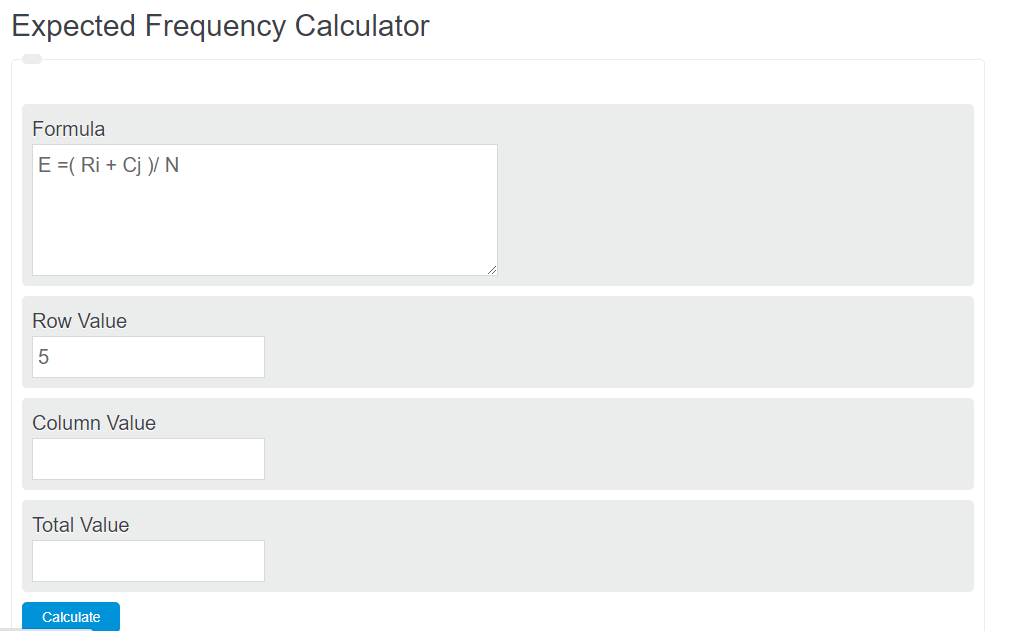Enter the total in the ith row, total in the jth column, and grand total into the calculator to determine the expected frequency. The calculator is found below.
- Post Test Probability Calculator
- Relative Standard Deviation Calculator
- Standard Normal Distribution Calculator
- Conditional Frequency Calculator
Expected Frequency Formula
The following equation can be used to calculate the expected frequency of a contingency table.
E =( Ri + Cj )/ N
- Where E is the expected frequency
- Ri is the total in the ith row
- Cj is the total in the jth column
- N is the grand total
To calculate the expected frequency, add together the total of the ith row and the total in the jth column, then divide the result by the total.
In the case of a contingency table, this expected frequency calculation must be performed on each cell. So if you have 32 rows and columns, you will need to do the calculation 32 times.
Expected Frequency Definition
Expected frequencies, as opposed to observed frequencies, are theoretical probabilities of certain outcomes occurring. For example, if you were to pick one card from a deck of cards, your expected frequency of getting any given card would be 1/52 = .0192 = 1.92%.
Expected frequencies are most often used when analyzing contingency tables. You can see an example of this below.
FAQ
An expected frequency is a term used in statistics to describe the probability count of a contingency table calculation.
An expected frequency is calculated using the formula above for each cell.

